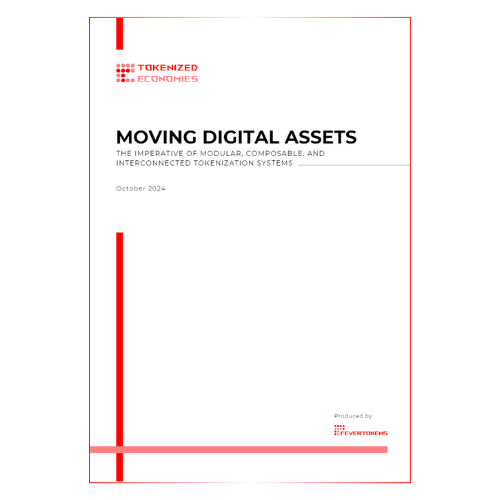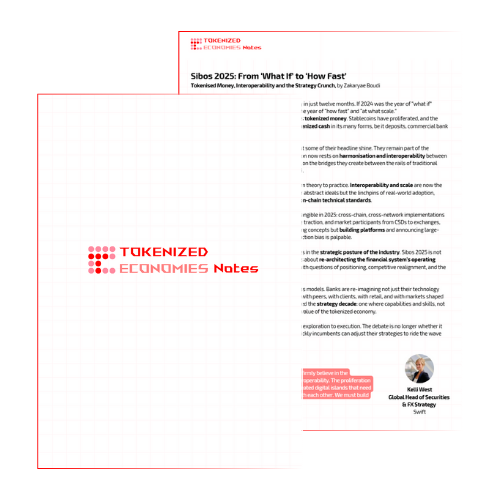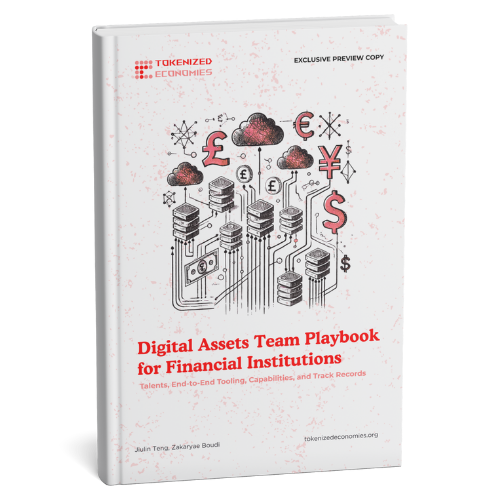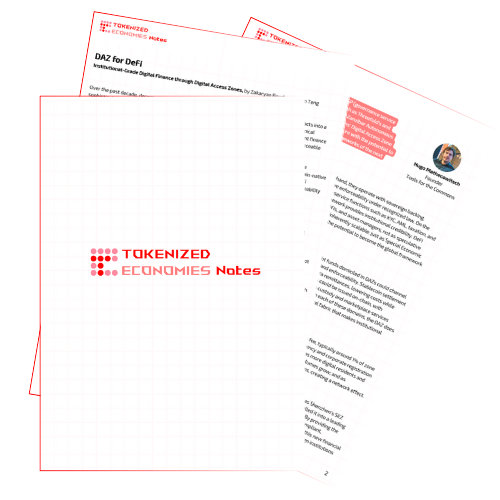Moving Digital Assets

Moving Digital Assets: Building the Infrastructure for Interconnected Tokenized Finance
The global financial system is approaching a turning point. Tokenization is no longer confined to pilot programs or siloed innovation teams—it is becoming a strategic imperative. But for tokenized assets to reach scale, the infrastructure behind them must be radically rethought.
In our latest report, “Moving Digital Assets: The Imperative of Modular, Composable, and Interconnected Tokenization Systems”, the Tokenized Economies Institute and FeverTokens set out a blueprint for that transformation. Drawing on active collaborations with SWIFT, Crédit Agricole CIB, and other financial leaders, we argue for a new architectural approach: one grounded in modularity, composability, and real-world interoperability.
Rethinking the Smart Contract Stack
At the heart of the current challenge is architecture. Traditional smart contract systems are often monolithic—rigid in design, difficult to upgrade, and siloed from broader ecosystems. These limitations are unsuited to the complexity of modern finance, where flexibility, compliance, and cross-system integration are non-negotiable.
To meet these demands, our framework adopts a modular, package-oriented approach, anchored in the Diamond Standard (EIP-2535). Each component of a smart contract can be independently developed, upgraded, and audited. The result is not only greater security and maintainability, but also the ability to build and scale composable systems across use cases, jurisdictions, and platforms.
The Package Hub: A Marketplace for Composability
A critical element of our architecture is the Package Hub—a global registry for smart contract components. This hub enables developers, financial institutions, and ecosystem players to share and deploy modules efficiently. Public packages can be used freely; private packages allow for customized workflows. In both cases, the goal is the same: accelerate innovation without reinventing the wheel.
This mirrors the evolution of the web, where open standards and reusable components allowed complex systems to flourish. For tokenization to follow a similar trajectory, composability must be designed into the core infrastructure from the outset.
From Concept to Implementation
The report highlights several recent field experiments. With SWIFT, we explored how modular smart contracts can enable seamless interaction across traditional and digital payment rails. Using Chainlink’s CCIP and oracles, we demonstrated how cross-chain communication and data reliability can be embedded into global financial messaging infrastructure.
We also present so|bond v2.0, developed in collaboration with Crédit Agricole CIB and built on our open-source framework. It is a legally compliant, ecosystem-wide infrastructure for issuing and settling tokenized financial instruments. so|bond’s earlier iteration supported a €100 million tokenized bond issuance with the European Investment Bank. The new version deepens integration and composability, bringing it closer to institutional-grade interoperability.
As Guénolé de Cadoudal, Head of Digital Assets at CACIB, notes:
“A tokenized economy cannot emerge in isolation. It requires shared, open standards and collaborative architectures. That’s why we contribute to so|bond, support the Diamond framework, and work closely with SWIFT and FeverTokens.”
Toward a Shared Infrastructure for Tokenized Finance
The transition to a fully tokenized financial system is not a matter of if—but of how well we prepare. This paper lays the groundwork for that preparation. By embracing modularity, ensuring interoperability, and enabling real composability, we move closer to a resilient and scalable architecture for digital assets.
Financial institutions, regulators, and technology providers each have a role to play. But success depends on one shared principle: tokenization must be built for integration, not isolation.
We invite the global community to engage with the tools, standards, and frameworks described in this report—and to help shape the future of finance, together.





